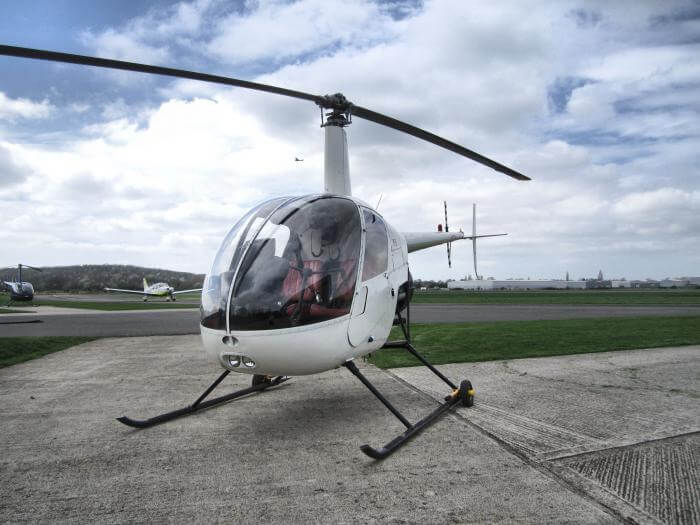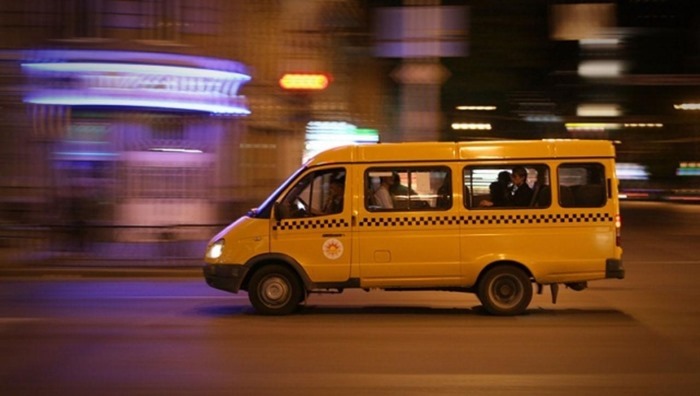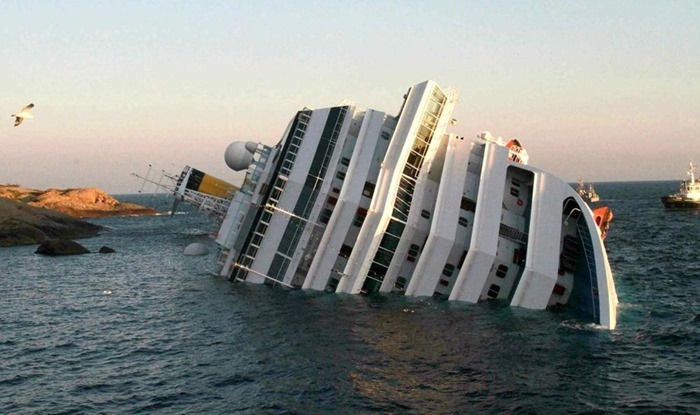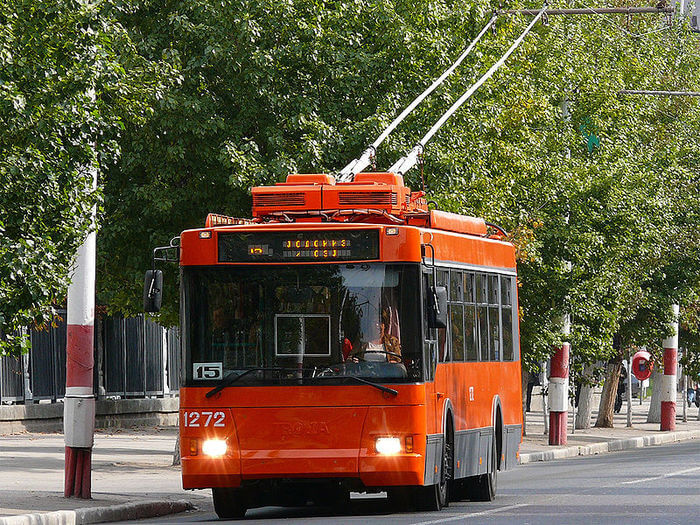Calculate, what type of transport is the safest, is not that simple. To build a beautiful and visual graph, at least two indicators are required - the number of dead or injured, as well as the number of people who use this type of transport. For air, rail and water transport, this data is easy to find, because thanks to tickets, every person is counted. But with automobile transport, there are problems. It is not possible to track the movements of the average Russian from work, to work and to the store - no one registers to leave on the threshold of their home.
10. Motorcycles
 > 200 deaths per 1.6 billion km
> 200 deaths per 1.6 billion km
Although the number of accidents involving motorcyclists has decreased by more than 70% compared to 2005, motorcycles still remain one of the most dangerous modes of transport. According to statistics, every 1.6 billion kilometers of road is paid for by the lives of more than two hundred drivers and their passengers.
A motorcycle, like another two-wheeled vehicle – a bicycle – is characterized by increased vulnerability, so accidents involving motorcyclists are likely to end tragically. The reason is non-compliance with traffic rules, and, surprisingly, the fundamental refusal of some drivers to use a helmet.
9. Personal cars
 5.75 people per 1.6 billion km
5.75 people per 1.6 billion km
Personal cars are in second place in terms of the number of road accidents. In total, at least 5.75 people die for every 1.6 billion km of road.
The reasons are both the unwillingness of drivers to comply with traffic rules, and the condition of the road surface, the increased wear and tear of the vehicle fleet due to the crisis and the deterioration of the population's purchasing power. And also (due to the increase in the average life span) the aging of drivers. All these factors together serve as a guarantee that automobile transport in Russia will not be safe for a long time.
8. Helicopters
 9.4 fatalities per 1 million passengers
9.4 fatalities per 1 million passengers
Among air transport, the greatest danger to human life is not international, but intercity. Especially if a person in a helicopter is forced to go to those places where even the notorious Makar prefers not to drive his calves. Perhaps this explains such a high number of victims among helicopter passengers. For every 1 million people, at least 9.4 are injured. They will have to fall from a great height, and, with a high degree of probability, the injuries will be incompatible with life.
7. Minibuses
 5 fatalities per 1.5 billion km
5 fatalities per 1.5 billion km
Minibuses are by no means the safest form of transport in Russia. According to statistics, every 1.5 billion km traveled by a minibus is paid for by five human lives. The reasons may include drivers working to the point of exhaustion, as well as design flaws in minibuses, the state of the roads, unwillingness to follow traffic rules, and drunk driving.
6. Intercity buses
 2.84 victims per 1 million transported
2.84 victims per 1 million transported
In 2018, there were several major accidents involving intercity buses, including a tragic accident in the Voronezh region, when two buses collided, killing five people and injuring 17. In general, statistics show that intercity and international buses are not particularly safe - for every million passengers transported, at least 2.84 are injured or killed in accidents. In total, in 2018, trips on intercity buses resulted in the death of more than 600 passengers, and more than 13 thousand people were injured.
5. Sea and river transport
 2.3 accidents per 1 million passengers
2.3 accidents per 1 million passengers
This category includes both international vessels and inland river carriers. In total, 62 accidents occurred during sea and river travel in 2018, which ended tragically for five people. Overall, according to NSS statistics, there are 2.3 accidents for every million passengers carried.
Passengers on sea and river vessels are threatened not only by the elements of water, but also by fire. One of the most common causes of transport accidents is a sudden fire on board a vessel, usually caused by faulty electrical wiring. This is not surprising, given that the Russian domestic fleet is in a deplorable state, and almost a third of the vessels have celebrated 40 years of operation.
4. Airplanes
 Probability of dying: 1:11,000,000
Probability of dying: 1:11,000,000
The safest transport in the world, but in Russia it is impossible to obtain accurate statistics on the number of accidents per number of passengers. The data of the National Insurers' Association, which we relied on when assessing the danger of other types of transport, are not available for them. The reason is the peculiarities of the insurance system in Russia; most air transport companies carry their passengers not only within the country, but also abroad. Therefore, they use international insurance policies.
Here's why flying is the safest form of transport: statistically, The chances of dying in an airplane accident are 1 in 11 million. For comparison: the chances of being struck by lightning while walking in a thunderstorm are 16 times higher!
3. Trains
 0.17 incidents per 1 million passengers
0.17 incidents per 1 million passengers
This category includes both intercity and international trains, as well as regular commuter trains. Overall, the statistics for Russian Railways in 2018 look excellent – for almost the entire year, from January to November, only seven accidents were registered. Unfortunately, there were some fatalities – one person died. Overall, there are no more than 0.17 accidents per 1 million passengers.
More and more people prefer to use one of the safest modes of transport, and this cannot be explained by the price alone. After all, the cost of plane and train tickets for some destinations has almost become equal. According to the Russian Railways website, in 2018, long-distance trains carried almost 8% more passengers than last year. And the increase in the number of commuter train passengers was almost 3%.
2. Trolleybuses
 0.09 cases per million transported
0.09 cases per million transported
The trolleybus is the second safest type of transport in Russia. According to NSS statistics, there are only 0.09 accidents per million passengers transported. Most of them are banal "stumbled and fell".
The reasons for the low trauma of a trolleybus are very simple - its volume and weight, as well as the low speed it develops. In a collision with, for example, a passenger car, the car will suffer much worse. And the passengers of the trolleybus will get off with minor bruises.
1. Tram
 0.04 victims out of 1,000,000 people
0.04 victims out of 1,000,000 people
The safest transport according to statistics for 2018 in terms of the ratio of accidents to passengers. Out of one million people who travel from point A to point B, no more than 0.04 people are injured. In addition to safety, the tram has many advantages:
- it moves more smoothly than a car or even a trolleybus;
- less noisy;
- completely independent from traffic jams (unless, of course, motorists try to drive on the tracks);
- Of all urban transport, it causes the least harm to the environment.
Unfortunately, trams are gradually disappearing from small Russian cities. The reason is the limited local budget, which simply cannot support a separate line. In just the past twenty years, the number of trams has decreased by more than 35%. Does this mean that the safest form of transport will gradually disappear from the urban landscape?














Оставить Комментарий